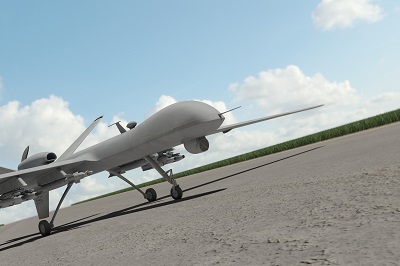A nation must think before it acts.
The False Promise of Drone Strikes? Ease vs. Effectiveness
Over the weekend, the Pentagon announced that Specially Designated Global Terrorist (SDGT) Farouq al-Qahtani (also known as Nayf Salam Muhammad Ujaym al Hababi), a senior al Qaeda leader in Afghanistan, had been killed in a drone strike in Kunar, Afghanistan. In a statement, the Pentagon said,
On October 23rd, U.S. forces conducted precision strikes in Kunar Province, Afghanistan, targeting Faruq al-Qatani and Bilal al-Utabi, two of al-Qaeda’s most senior leaders in Afghanistan. We are still assessing the results of the strikes, but their demise would represent a significant blow to the terrorist group’s presence in Afghanistan, which remains committed to facilitating attacks against the United States, our allies, and partners.
What the Pentagon fails to admit—even after years of conducting drone strikes in the region—is that the death of al-Qahtani will have little effect on defeating al Qaeda and winning the “War on Terrorism.” He secured the relocation of some al Qaeda members from Pakistan into Afghanistan, and he planned attacks on the U.S. and the West: “In 2010, [al-Qahtani] participated in two attacks against Coalition Forces convoys, and he led operations in northeast Afghanistan that included attacks against U.S. military bases in 2009.” All signs point to al-Qahtani being an invaluable member of al Qaeda in eastern Afghanistan. Both former director of the Defense Intelligence Agency Michael Flynn and former acting director of the CIA Michael Morell characterized him as a great asset for al Qaeda and tough enemy for the U.S. Al-Qahtani worked with the Taliban and was a “true believer” in the cause. Kunar—where the deadly strike occurred—is where U.S. forces have experienced some of the worst fighting. Al-Qahtani forged a strong al Qaeda presence there.
No matter what role al-Qahtani served—alliance forger, fundraiser, attack planner—his death only serves as a symbol similar to Osama bin Laden’s. When bin Laden was killed in 2011, President Barack Obama and his cabinet members pegged al Qaeda as “on the run” and no longer a major threat to the world. Secretary of Defense Leon Panetta said a month after bin Laden’s death, “I’m convinced that we’re within reach of strategically defeating al-Qaeda.” Neither declaration proved true. Al Qaeda is resurgent across the Middle East: from regrouping and fundraising in Pakistan to training hundreds in Afghanistan to legitimizing itself in Syria.
Despite these pronouncements of impending victory, U.S. counterterrorism strategy is inherently flawed. The U.S. relies on a tactic known as decapitation, which states that eliminating the leaders of an organization will lead to its destruction. This tactic has been used since the Bush administration, yet consecutive administrations have said the same thing in variety of ways: “killing so-and-so was a great victory for the U.S. and its allies because this death removes a skilled and talented leader from al Qaeda’s ranks.” Killing any leader of al Qaeda—or the leader of any organization or state—will not cause its ultimate collapse. Since the start of the U.S. targeted killing program, approximately 58 leaders have been killed in Pakistan, 22 in Somalia, and 35 in Yemen. Yet, the U.S. incorrectly keeps saying that this particular death is paving the way for the destruction of al Qaeda. Taking away from its message and ideology is what will lead to its demise. Without a strong and meaningful message, potential donors and members will have no reason to help al Qaeda. Killings its leaders (and potentially civilians) will only embolden the organization and create another martyr to the cause.
With the U.S. celebrating another step towards victory against al Qaeda, here is what to expect in the coming weeks or months. In response to the death of al-Qahtani, al Qaeda will retaliate in some form. Al Qaeda has the infrastructure, imbedded bureaucracy, and community support to survive continual decapitation strikes. Due to its increasingly franchised nature, this death will do nothing to damage al Qaeda groups operating outside of Afghanistan.
It has survived 15 years of strikes and in the unlikely event that the next administration changes course away from reliance on drone strikes, al Qaeda will continue to operate across the Middle East and orchestrate attacks. The U.S. should not necessarily abandon the use of signature strikes, but increasing restraint is needed. Killing leaders has not been successful, so come January 2017 when the next administration takes office, one of its first priorities should be to evaluate the failure of drones under the Bush and Obama administrations. Such an evaluation would help to determine if scaling back of drone use is required or if drones should be used in a support role before and after ground engagements. Conducting drone strikes is the safest way to attack an enemy, but it has proven not to be the most effective. This latest strike against Farouq al-Qahtani is no different.




